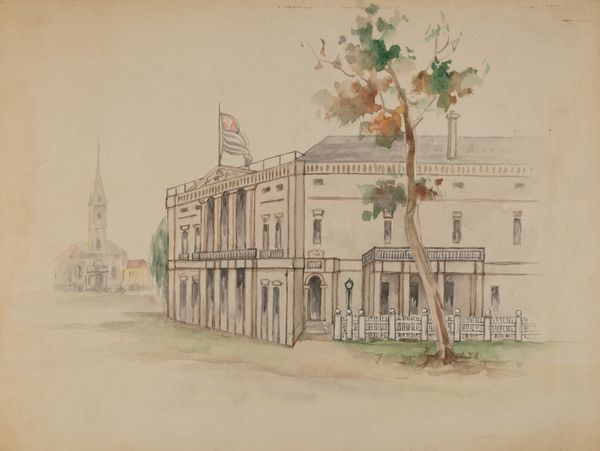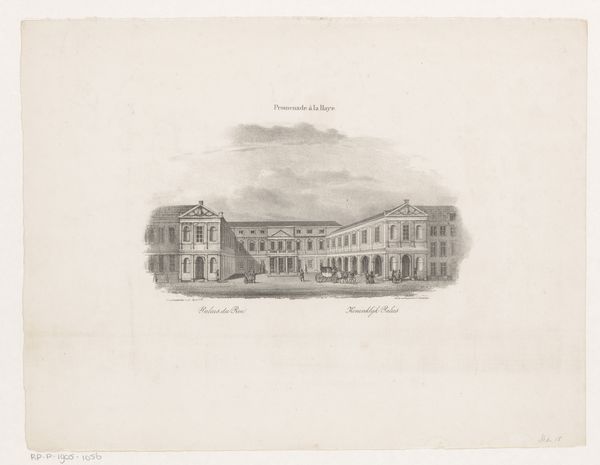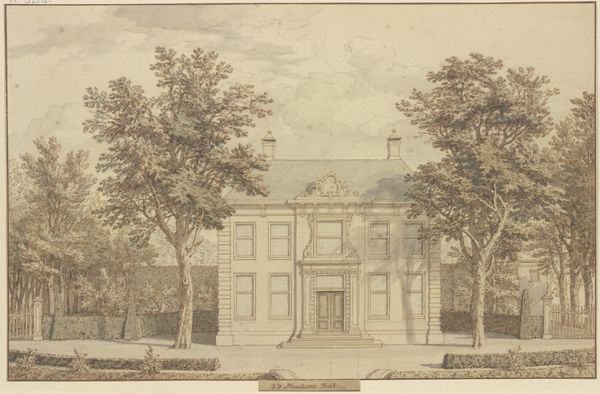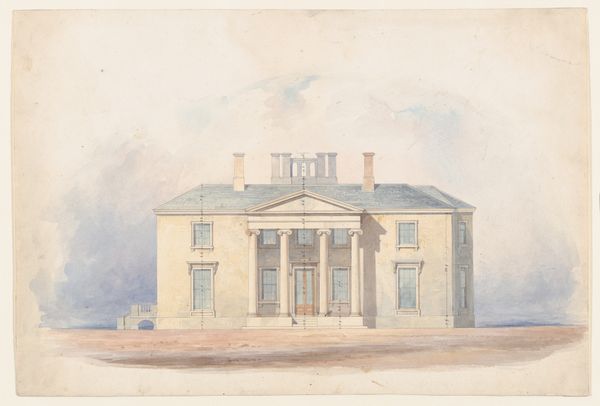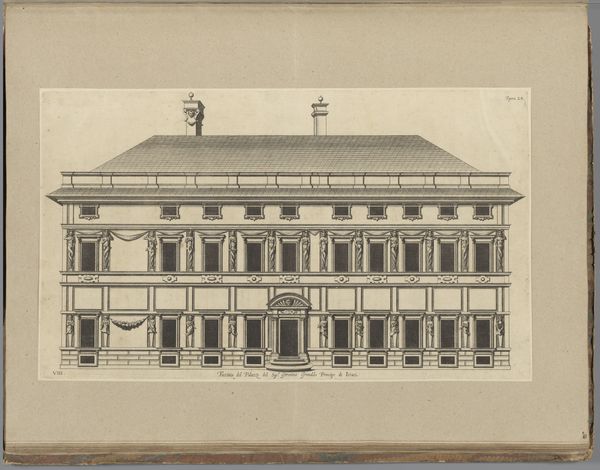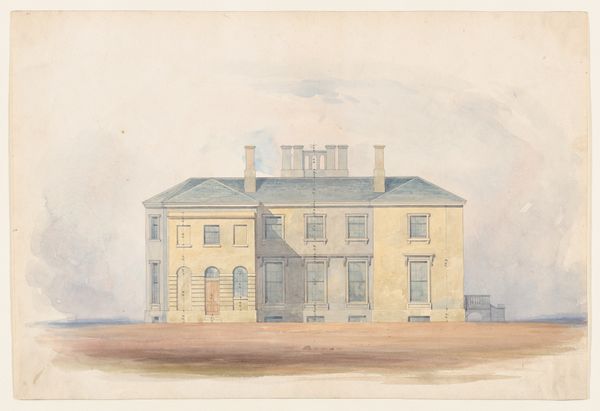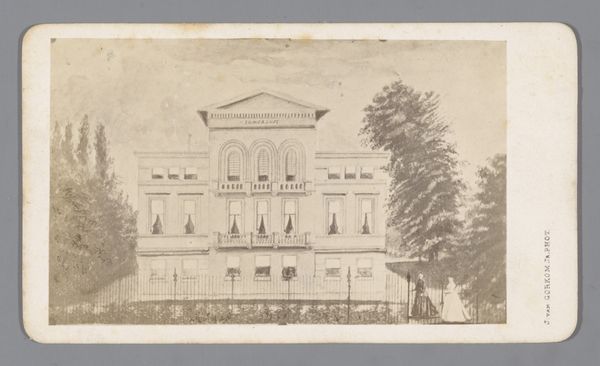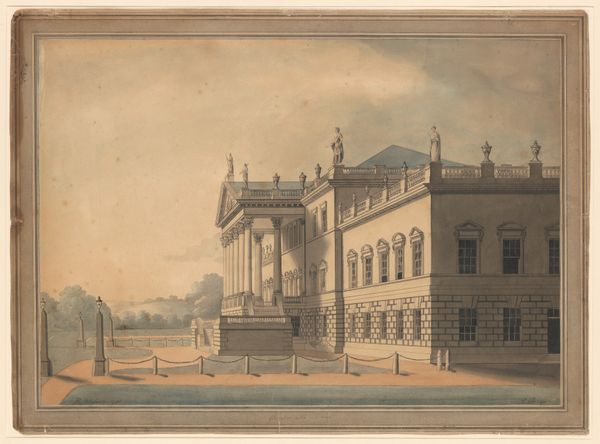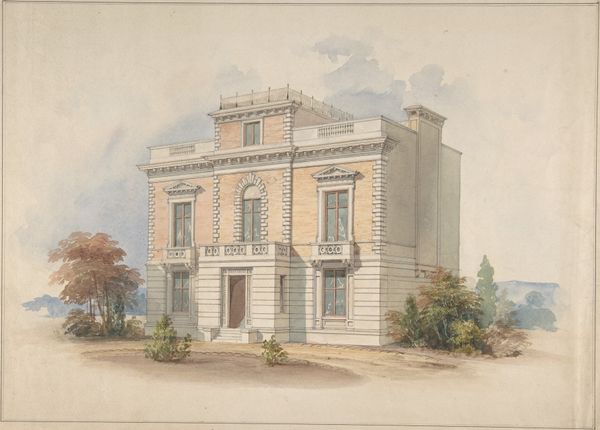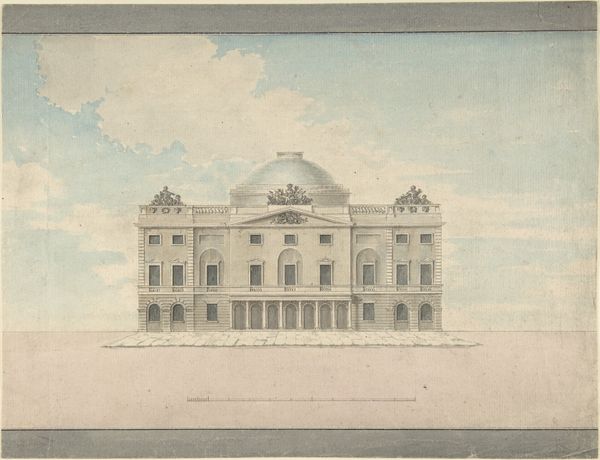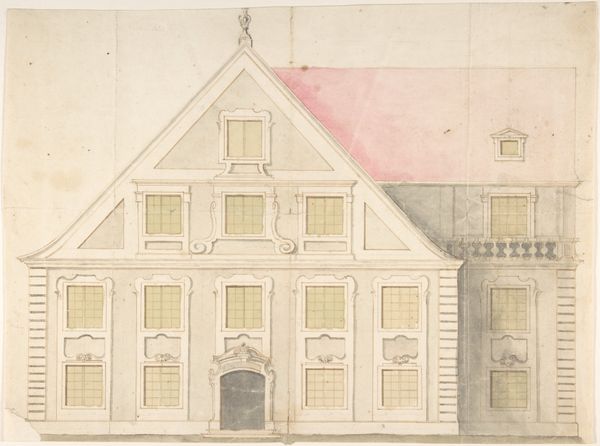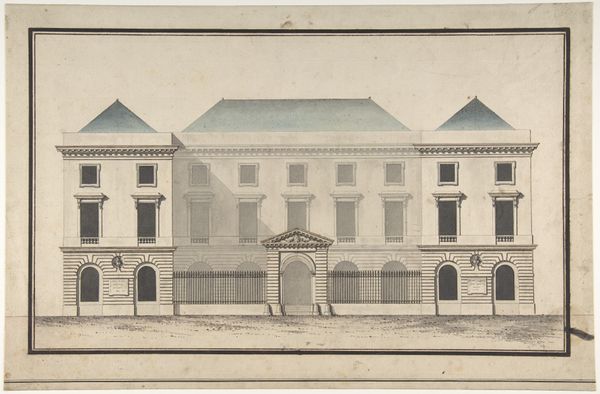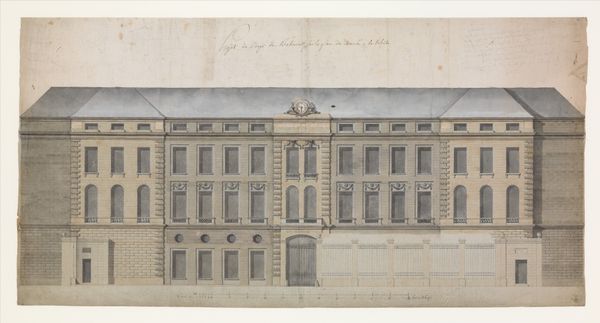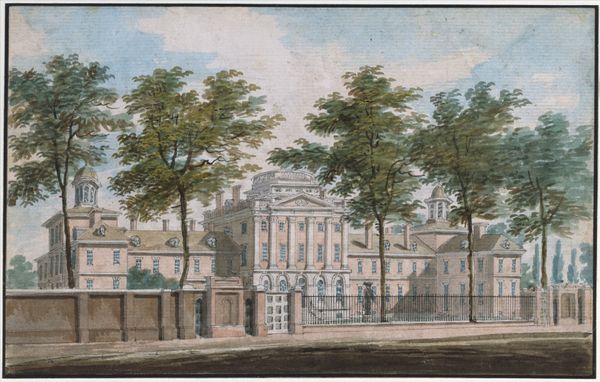
drawing, painting, paper, watercolor
#
drawing
#
painting
#
landscape
#
paper
#
watercolor
#
cityscape
#
watercolor
#
realism
Dimensions: overall: 22.8 x 30.1 cm (9 x 11 7/8 in.)
Copyright: National Gallery of Art: CC0 1.0
Curator: Welcome. Today we’re looking at "House with Flag," a watercolor and ink drawing on paper, made sometime between 1935 and 1942. Editor: It’s… wistful. There’s a fragility in the rendering, especially the washed-out colors, that gives it an air of memory. Curator: Indeed. The application of watercolor creates a muted palette, perhaps commenting on the socio-economic atmosphere of its time, potentially reflecting scarcity during the depression era, influencing the choice of modest materials like paper and watercolor over more expensive oils. Editor: The composition directs my eye from the flag down the rigid lines of the house to the organic form of the tree on the right. I like how that lone tree contrasts with the geometrical severity of the building; it lends some balance. Curator: Right. Notice the artist's hand. The quick, repetitive strokes indicate efficiency but perhaps also the constraints imposed on artists during the period, limiting their access to studio space or finer materials. We must also consider that it is unsigned. Editor: While unsigned, it presents a unique formal study. The delicate balance achieved through a subdued color palette is carefully offset by a well-defined structural depiction of architecture. The slightly off-center positioning of the building— Curator: It subtly implies the human element and a touch of spontaneity; that would normally suggest an external commissioner who controlled creative decisions to the artist. The paper substrate itself is a product of industry, which emphasizes access and affordability of creative materials in an age increasingly defined by consumption. Editor: The drawing compels reflection on national identity in this period with some uncertainty. Despite the presence of the flag, its somewhat faded appearance suggests a degree of questioning toward patriotism or authority. Curator: The artwork exemplifies how everyday materials became the canvas of socio-political and individual sentiment in response to larger social movements of that period. This resonates far beyond mere aesthetics, telling narratives about our interaction with making art during uncertain times. Editor: Ultimately, the tension between structure and nature in "House with Flag" leaves the viewer contemplating broader themes of societal progress, as well as what compromises people had to face with that "progress."
Comments
No comments
Be the first to comment and join the conversation on the ultimate creative platform.
